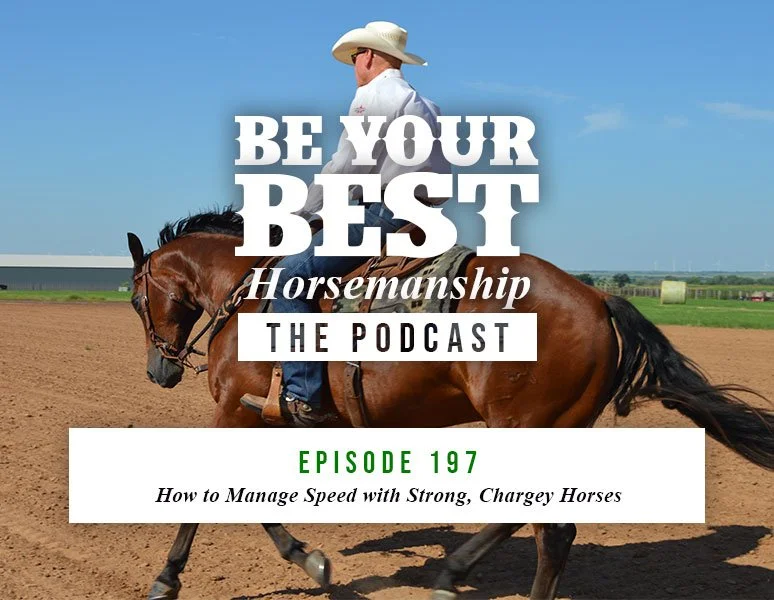Ep 197: How to Manage Speed with Strong, Chargey Horses
Speed is a complex response, acting as both a horse's natural self-defense response and a desired attribute in performance events. The delicate balance between controlling speed and harnessing it can prove to be one of the most challenging parts of horsemanship, especially when you are dealing with a naturally strong, "chargey" horse. On this episode, I'm sharing some techniques for managing speed and maintaining communication with horses who have strong reactive tendencies.
Understanding Speed as a Response
Speed is an instinctual response triggered by fear or insecurity. However, in performance events, it's also a sought-after quality for quick task completion. Striking the right balance between harnessing this energy and preventing reactive responses can pose challenges for trainers aiming to enhance communication while controlling speed and direction.
Navigating the Challenge of “Chargey” Horses
"Chargey" horses, those that are reactive, flighty, or strong in the bridle, require careful handling. Often, their past experiences may contribute to their reactive behavior. The task is to develop a connection that encourages them to come back to you without triggering a reactive response, even with slack in the reins.
Stimulating the Thinking Side of the Brain
For effective communication, when a horse feels pressure, it should stimulate the thinking side of their brain to find the desired response, leading to a release of pressure. The tricky part is, oftentimes, the signal that we provide to increase speed and to provide a response are very similar. Horses lacking consistent training may struggle to distinguish these signals.
Helping the Horse Differentiate Between Responses
If you are dealing with a naturally strong, chargey horse, start with a simple exercise to where that horse starts to associate your hand sliding down the rein as a trigger to flip that switch back to the thinking side of the brain. Simple exercises can help horses discern between signals. Select exercises that stimulate the thinking side of the horse's brain, allowing you to offer timely releases. This is an essential step in regaining control over speed and response patterns.
Addressing Foundation Gaps
If your horse responds with flight upon dropping your hand, it indicates foundational gaps in their training. Address these gaps with patience and consistent training to help them overcome reactive tendencies.
The Caveat with Consistency
Correct repetitions create great habits. The challenge is, correct repetitions can create habits that are good or bad, depending on how you apply it and how you’re consistent with it. We have to be careful that we aren’t creating great habits that have undesirable outcomes. Consistency is key, but you want to use it in an efficient manner.
The Value of Fence Work
Fence work can be a valuable tool for helping a horse understand how to change speed and direction properly. However, overuse can lead to anticipatory behavior and stiffness. When I’m working a horse on the fence, I like to stay about 10 feet away from the fence, drop my hand, and help that horse follow through with their direction change with my body. Maintaining this distance allows them to stay light on their feet and have the space they need to make a smooth transition. I maintain contact with the inside rein, tip the horse’s nose to the inside, and keep my body weight shifted slightly to the outside stirrup. I’ll do this maneuver many times until I feel my horse relax and maintain the speed I set them at throughout that direction change.
Understanding Your Horse’s Potential
Horses are smart. If you stay consistent with giving your horse the signal and you are patient, they will figure it out; however, not every horse will figure it out at the same pace. Horses are just like humans in that sense–every one of them is unique. Remember, each horse is going to learn in a slightly different way, and patience, consistency, and thoughtful techniques are the keys to successful speed management.
“Be Your Best Horsemanship” is brought to you by Silver Lining Herbs, Classic Equine, Martin Saddlery, Better Horses Network, Purina, Healthycoat, CINCH, Starbar, and Clarifly. These brands have been part of the Phil Haugen Horsemanship team for many years, and their products continue to play an integral role in the success of our performance horse training program. To support these brands, visit our Sponsors tab.




